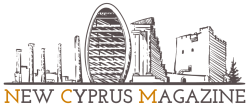Cyprus is bringing back 60 ancient treasures taken after the 1974 Turkish invasion, including ecclesiastical relics and prehistoric artifacts, from a smuggling operation led by Aydin Dikmen. This repatriation marks a proud moment for Cyprus, symbolizing the restoration of its cultural identity and a victory for its people.
What significant antiquities is Cyprus repatriating from Germany?
Cyprus is repatriating 60 ancient treasures taken after the 1974 Turkish invasion. The repatriated items include 24 ecclesiastical relics and 36 prehistoric artifacts, all recovered from the smuggling operation of Turkish trafficker Aydin Dikmen. This landmark event symbolizes a restoration of Cypriot cultural identity.
The Journey Home for Cyprus’ Lost Heritage
In a landmark agreement with German authorities, Cyprus is set to welcome back 60 precious antiquities taken from the island after the Turkish invasion in 1974. This repatriation is not just about returning artifacts; it’s a restoration of cultural identity and a poignant victory for the Cypriot people.
The artifacts include 24 ecclesiastical relics and 36 prehistoric treasures, which are expected to be returned after June 20. This resolution marks the end of a long-standing struggle to reclaim invaluable pieces of Cyprus’ history, encapsulated in the Aydin Dikmen case, which centered on the smuggling of these significant antiquities.
The Fight Against Cultural Pillaging
Uncovering the dark underbelly of the illicit art trade, the case of Turkish antiquities trafficker, Aydin Dikmen, serves as a stark reminder of the vulnerability of cultural heritage during times of conflict. Dikmen, aided by various accomplices, orchestrated the theft of artifacts from Greek Orthodox, Maronite, and Armenian Christian sites, as well as from occupied archaeological digs and private collections.
When authorities raided Dikmen’s operations in March 1997, they recovered over 318 relics of Cypriot origin. These included stunning mosaics from the 6th century and a range of frescoes dating from the 8th to the 15th centuries, along with icons, manuscripts, and assorted prehistoric objects.
Legal Battles and a Community’s Perseverance
The legal journey to reclaim these artifacts began earnestly in 2004. It was only in 2010 that the Munich District Court ruled in favor of their return to Cyprus. Despite Dikmen’s appeals, which caused further delays, a portion of the treasures started trickling back to their homeland in 2013 and 2015.
The Church of Cyprus and numerous government representatives, including those from the legal service, the police, and the department of antiquities, tirelessly pursued the case’s successful resolution. They were aided by experts like Dr. Johannes Deckers and Dr. Katerina Hadjistylli, and individuals such as Tasoula Hadjitofi and the late Byzantinologist Athanasios Papageorgiou, who were instrumental in identifying the stolen objects.
Protecting Cyprus’ Cultural Legacy
The return of these cultural items is celebrated as a momentous occasion, a day of joy for Cyprus. The Church has commended all who played a role in this complex process. The repatriation is a testament to the resilience of a community in safeguarding its historical and artistic legacy.
Michalis Gavrielidis, the Head of the Office for Combating Illegal Possession and Trafficking of Antiquities, notes the immense scale of the loss Cyprus has faced since 1974, with over 16,000 icons, mosaics, and murals dating back to the 5th and 6th centuries having been stolen and sold. This event is a significant step forward in rectifying the injustices of the past and preserving the cultural richness of Cyprus for future generations.
1. What significant antiquities is Cyprus repatriating from Germany?
Cyprus is repatriating 60 ancient treasures taken after the 1974 Turkish invasion. The repatriated items include 24 ecclesiastical relics and 36 prehistoric artifacts, all recovered from the smuggling operation of Turkish trafficker Aydin Dikmen. This landmark event symbolizes a restoration of Cypriot cultural identity.
2. What was the significance of the Aydin Dikmen case in relation to Cyprus’ cultural heritage?
The Aydin Dikmen case highlighted the vulnerability of cultural heritage during times of conflict, as Dikmen orchestrated the theft of artifacts from Greek Orthodox, Maronite, and Armenian Christian sites, as well as from occupied archaeological digs and private collections. The recovery of over 318 relics of Cypriot origin in 1997 brought to light the extensive cultural pillaging that had taken place.
3. How long did it take for Cyprus to reclaim the stolen antiquities?
The legal journey to reclaim the stolen antiquities began in 2004, culminating in a ruling from the Munich District Court in 2010 in favor of their return to Cyprus. Despite delays caused by appeals from Aydin Dikmen, a portion of the treasures started returning to Cyprus in 2013 and 2015.
4. Why is the repatriation of these cultural items significant for Cyprus?
The repatriation of these cultural items is significant for Cyprus as it marks a proud moment for the country, symbolizing the restoration of its cultural identity and a victory for its people. It also serves as a step towards rectifying the injustices of the past and preserving the cultural richness of Cyprus for future generations.

